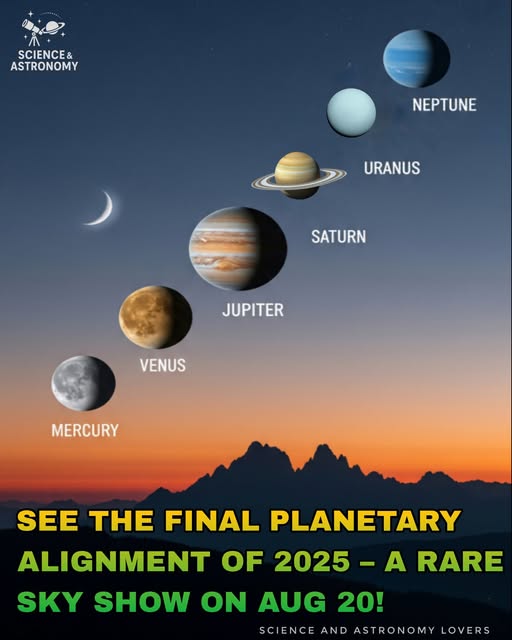Sorry, No Planet Parade: the truth about 20 August
Donna Burton
19 August 2025, 10:41 PM
 A misleading photo post doing the rounds of the internet (sourced)
A misleading photo post doing the rounds of the internet (sourced)Donna the Astronomer here — yes, the one who enjoys orbital mechanics more than dramatic headlines.
Before your feed fills with breathless claims that the planets will “line up” on 20 August like extras in a science‑fiction parade, here’s a reality check with a smirk.
What people mean (and what they don’t)
- “Planetary alignment” in clickbait land usually implies a crisp, photographic straight line of planets stretching across the sky. That’s not what astronomers mean.
- A proper term is conjunction: from our viewpoint on Earth, two or more planets share roughly the same direction (ecliptic longitude). In plain English: they appear close together in the sky, not physically in a single file through space.
Why the Solar System doesn’t stage a runway show
- The Solar System is approximately flat — the planets orbit near the ecliptic plane — but “approximately” is doing a lot of work. Each planet’s orbit is tilted slightly and the planets are at vastly different distances from the Sun.
- So even when several planets have similar sky longitudes, they can be separated by tens or hundreds of millions of kilometres in three‑dimensional space. You won’t get a literal line of planets stretching across the cosmos.
What a “planet parade” actually is
- A planet parade is a loose clustering of bright planets along the ecliptic. It can be a beautiful sight if timing, sky conditions and your location cooperate.
- Whether you can see the parade with the naked eye depends on: the planets’ elongation from the Sun (how far they appear from the Sun in the sky), local horizon, light pollution, and the weather. Sometimes the best view is just after sunset or before sunrise, when several planets are above the horizon together.
Why some of the media keep getting it wrong
It seems that “Alignment” sells. Straight lines, grand events and apocalypse vibes generate clicks; subtler realities do not.
Headlines compress complex geometry into a single phrase.
The nuance about apparent proximity versus real spatial alignment gets lost between headline and share button.
This results in anxious or overexcited posts, with readers expecting a choreographed sky show that won’t happen.
About 20 August specifically.
There is no striking, naked‑eye straight line of planets to look forward to on 20 August.
You might see a couple of bright planets in the same general patch of sky around dawn or dusk depending on where you are — but not a precision parade.
Also, you can see the naked eye planets: Jupiter, Venus and Saturn regularly over the next few months. So, don’t be disappointed if the weather is bad!
In the early morning sky you can easily see Venus and Jupiter in the Eastern Sky from around 5 am local time, Mercury rises roughly around 5:45am local time and is very difficult to see unless you have a perfectly clear eastern horizon - cruise ships or east coast locations may work, but tough for the rest of us! Mars is setting around 8:30pm low in the West.
Saturn rises about 8:10pm in the East with Neptune below to the North East both need a telescope to really make them out.
While Uranus rises in Taurus about 1am but needs a reasonable size telescope to see.
Also they will look nothing like the Voyager and/or HST photographic images!
If you want certainty for your location and time, check a reliable planetarium app such as Stellarium or an ephemeris such as on timeanddate.com. They’ll give accurate rise/set times, elongations and a realistic sky map and save you from disappointment and odd conspiracy threads.
Final note (with affection)
- I love that people take an interest in the sky. Just don’t let sensational headlines replace a quick check with good tools or a dose of basic celestial mechanics.
The real Solar System is far more interesting than clickbait.
Brought to you by Donna the Astronomer, slightly amused, scientifically accurate, and available for myth‑busting questions.
EXPLORE MORE

